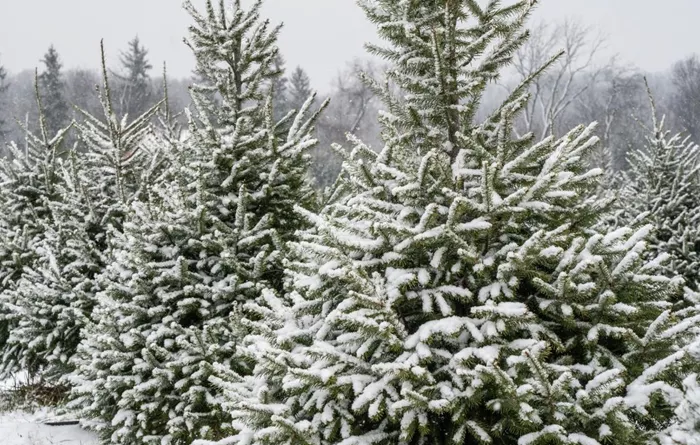Each year, around 30 million Americans buy a real Christmas tree. Growing these trees takes about seven years, during which farmers must protect them from pests like insects, fungal diseases, and even deer. While researchers believe the trees’ signature pine scent may help ward off some of these threats, not all trees have the same smell, and scientists are still trying to figure out which specific scent molecules offer the best protection.
Philipp Zerbe, a plant biology professor at UC Davis, is leading a team to find the perfect mix of chemicals in the tree’s scent. Their goal is to both keep pests away and provide the familiar holiday aroma that consumers love. This research could help improve the trees’ resilience and make them even better for future holiday seasons.
“We want to give breeders trees that are more resistant to pests and diseases while also keeping the traditional fragrance people enjoy,” said Zerbe.
Why Do Plants Smell the Way They Do?
Zerbe’s research focuses on understanding how plants use chemicals to protect themselves from threats. One key group of chemicals, called terpenes, play a role in attracting pollinators, repelling herbivores, and fighting off diseases. These terpenes also have distinct smells, and many are used in perfumes.
“Our goal is to study the diversity of terpenes in different plants and understand how they contribute to plant growth and defense. We can then use this knowledge to make crops more resilient,” said Zerbe.
Speeding Up the Plant Breeding Process
The U.S. holiday tree industry is worth over $2.5 billion. Like other crops, Christmas trees face challenges from pests, diseases, and even drought. Traditionally, selective breeding has been used to improve trees, but it takes about 25 to 30 years for a breeding cycle. Zerbe’s team hopes to speed up the process by identifying the chemicals and genes that make trees resistant to these threats.
“Unlike most crops, conifers grow slowly and take a long time to regenerate,” Zerbe explained. “By understanding the genetics, we could reduce the breeding cycle to just 10 years, which would be a big help for the industry.”
To start, the researchers used chemical techniques to compare the scent profiles of different trees. While many types of conifers are sold as Christmas trees, the team is focusing on the Fraser fir (Abies fraseri). This species, native to the Appalachian Mountains, accounts for about 40% of U.S. Christmas tree sales.
Next, the team is working to identify the genes and pathways that produce the different terpenes in these trees.
“If we want to breed trees with specific scents, we need to know which genes and enzymes are involved,” said Gabrielle Wyatt, a doctoral candidate in Zerbe’s lab. “It always smells like Christmas trees in our lab!”
From Lab to Consumer Testing
Once the team understands how the trees produce their aromas, they will test how well these scents repel deer and other pests. They will also conduct consumer panels to see which scents people prefer.
“The breeders and growers we work with are really interested in understanding how consumer preferences line up with pest resistance,” Wyatt said.
This project is part of a larger collaboration led by the North Carolina State Christmas Tree Genetics Program. Recently, the project received $7.5 million in USDA funding, with Zerbe’s team receiving nearly $700,000. The collaboration includes 11 research groups focused on plant health, pest control, genomics, and even social sciences.
Upcycling Christmas Trees After the Holidays?
In the future, Zerbe’s team may also explore the possibility of “upcycling” trees for use in the perfume industry after the holiday season ends. Terpenes, the chemicals that give trees their scent, are valuable ingredients in fragrances.
“Terpenes are key in the fragrance industry,” said Zerbe. “We hope to find cost-effective ways to extract these chemicals from old Christmas trees, which could help reduce waste and benefit the environment.”
Related topics:
- Enjoying Plant-Based Meals All Through the Holiday Season
- Scientists Discover How to Grow Plants Without Light
- Invasive Heather Threatens Tongariro’s Native Plants with Rapid Spread


